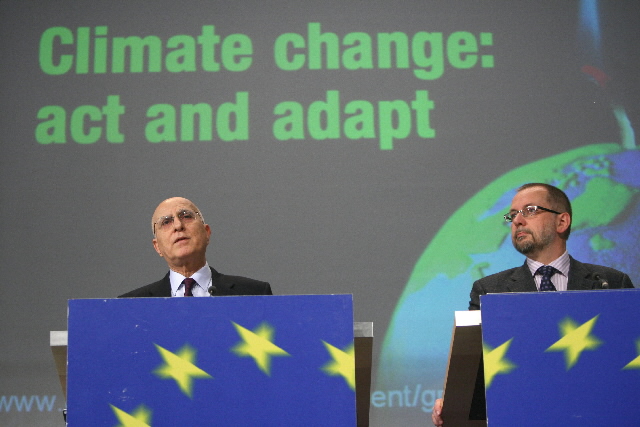 We Think Europe
We Think EuropeAuthor
Institutions of the EU
by Susanne Hentschel, 2010
European Union – Climatic changes, Environment

A rise of the world wide temperature of three to four degrees. A rise of the sea level of fifty cm. A rise of the greenhouse gas emission carbon dioxide of the eightyfold. An over-acidification of the sea, multiple diseases, enormous droughts, bad crops. And all that in this century.
Everybody knows the approximate facts and consequences which are brought along by the climate change. Nowadays the policy of many states just revolves around the one question “How can we stop the climatic changes?”, while other countries simply continue polluting the environment. Of course, it is of great significance what each and every person does about it but the initiative and sundry guidelines should be given by experts and especially the government. So the question about the actions taken by the European Union is quite obvious. Does the European Union actually have a lot to say regarding this topic? And if yes, who has the biggest influence? How do they take action? What strategies do they have?
Since the climatic change is obviously one of the most aggravating problems of our present time, the European Union agitates in a determined way and takes a stand for a worldwide agreement on the decrease of greenhouse gas emissions. They started common initiatives dealing with the topic environment in the year 1972, when the summit of Paris took place. Here the current member states came to a compromise that set the future importance of an established environmental policy. But it was only fifteen years later that this agreement became obligatory with the Single European Act. In 1999 a treaty became valid which claims that in any policy of the European Union they have to consider the consequences on the environment. The EU Environmental Law includes almost all sections of the environmental policy. It contains guidelines regarding the purification of air, water and also instructions concerning the conservation of species and nature as well as the waste policy.
In December 2008 the European Union developed strategies to slow down the climatic changes. They set a list of quite ambitious aims.
These measures are not only useful for the European Union, no, the purpose is of course to counteract the current danger that is caused by the climate change. By setting such advanced and progressive aims the EU has an exemplary function for many other states, which apparently have not understood the seriousness of the situation and the necessity of acting on it. The successful accomplishment of those aims would lead to financial savings of fifty billion € per year. Another positive side effect is the creation of many new workplaces in the environmental sector. The sanitary situation of the citizens would also improve which means savings in healthcare.
There is no doubt that the EU acts commendably by setting such aims. But the question is if they are actually realistic. Can you really set common aims for an association of 27 states? Are 27 states with 27 governments able to execute such aims in a common way? Dealing with that topic we do not need dry-witted realism but optimism. I any case we can be sure that 27 states with 27 governments can have way more influence on the climatic change than every single state on his own.